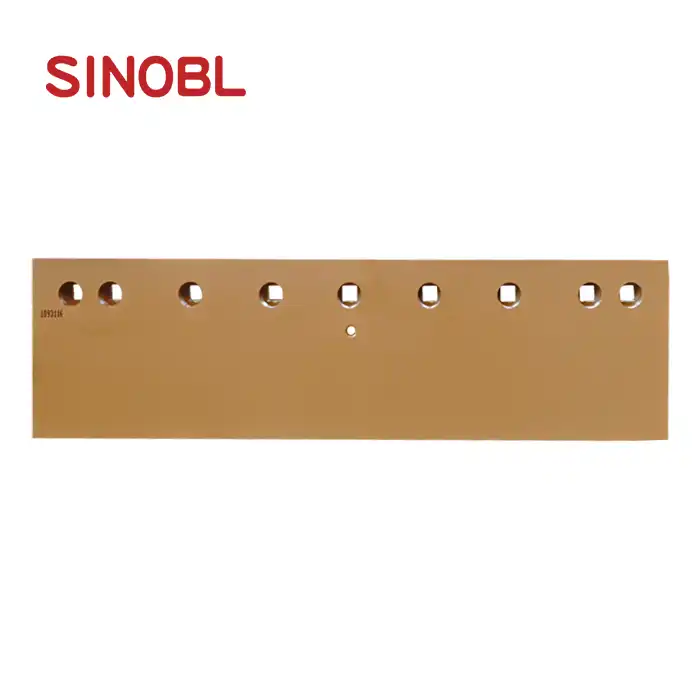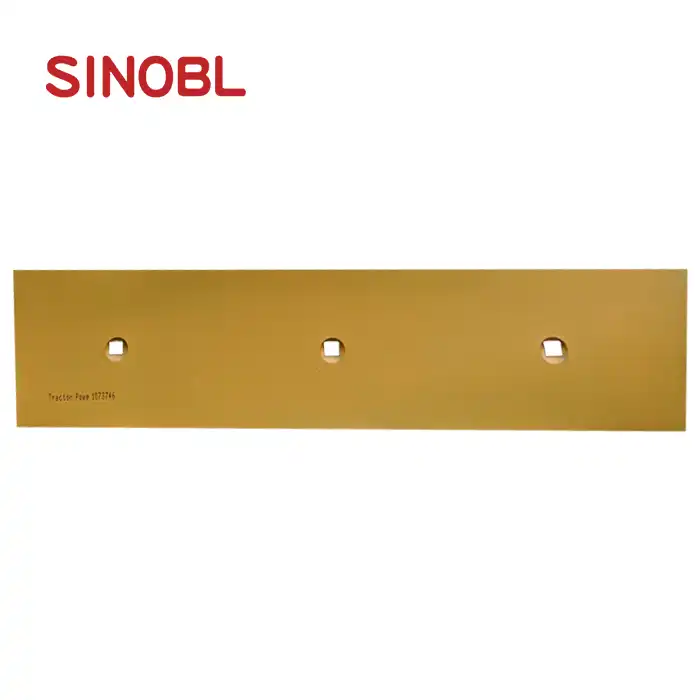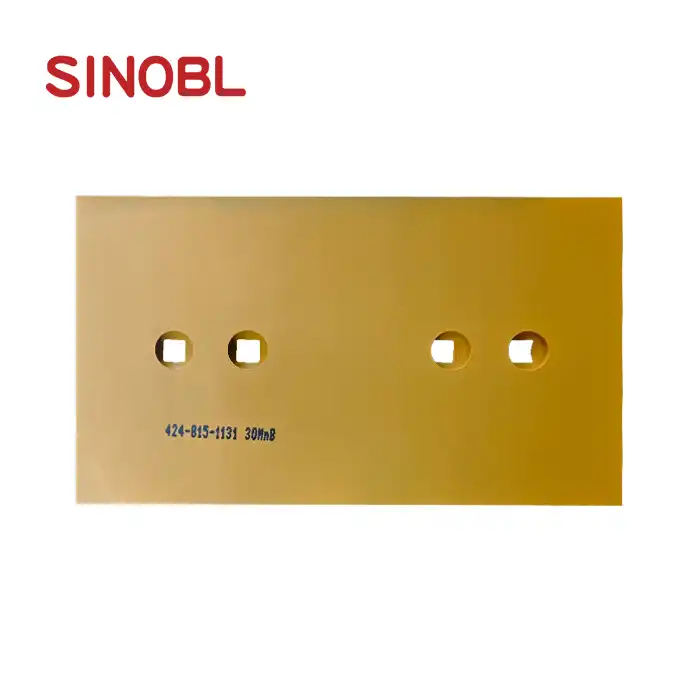How Does the Dozer Edge-Cutting 4T8101 Combine Strength and Precision?
The construction and mining industries demand equipment components that can withstand extreme conditions while maintaining exceptional performance standards. When it comes to bulldozer cutting edges, the Dozer Edge-Cutting 4T8101 represents a perfect synthesis of engineering excellence and practical durability. This cutting-edge component combines advanced metallurgy with precision manufacturing to deliver unparalleled strength and accuracy in earthmoving operations. The Dozer Edge-Cutting 4T8101 achieves this remarkable balance through its innovative design approach, which incorporates high carbon steel construction with heat-treated boron steel reinforcement, creating a component that not only resists wear but also maintains dimensional stability under the most demanding operational conditions. This sophisticated engineering approach ensures that operators can rely on consistent performance across diverse applications, from large-scale construction projects to intensive mining operations.
Advanced Material Engineering: The Foundation of Strength
High Carbon Steel Construction Excellence
The Dozer Edge-Cutting 4T8101 utilizes premium high carbon steel as its primary material foundation, representing a strategic choice that directly impacts both durability and performance characteristics. High carbon steel contains between 0.6% to 1.7% carbon content, which significantly enhances the material's hardness and wear resistance properties compared to conventional mild steel alternatives. This elevated carbon content creates a crystalline structure that provides superior edge retention and impact resistance, essential qualities for bulldozer operations that encounter abrasive soils, rocky terrain, and demanding excavation conditions. The manufacturing process begins with careful selection of raw materials, ensuring that each batch meets stringent quality specifications before proceeding to the forming stage. Shanghai SINOBL's advanced metallurgical processes optimize the carbon distribution throughout the Dozer Edge-Cutting 4T8101, eliminating weak points and ensuring uniform strength characteristics across the entire cutting surface. This meticulous attention to material composition translates directly into extended service life, reduced replacement frequency, and improved operational efficiency for end users.
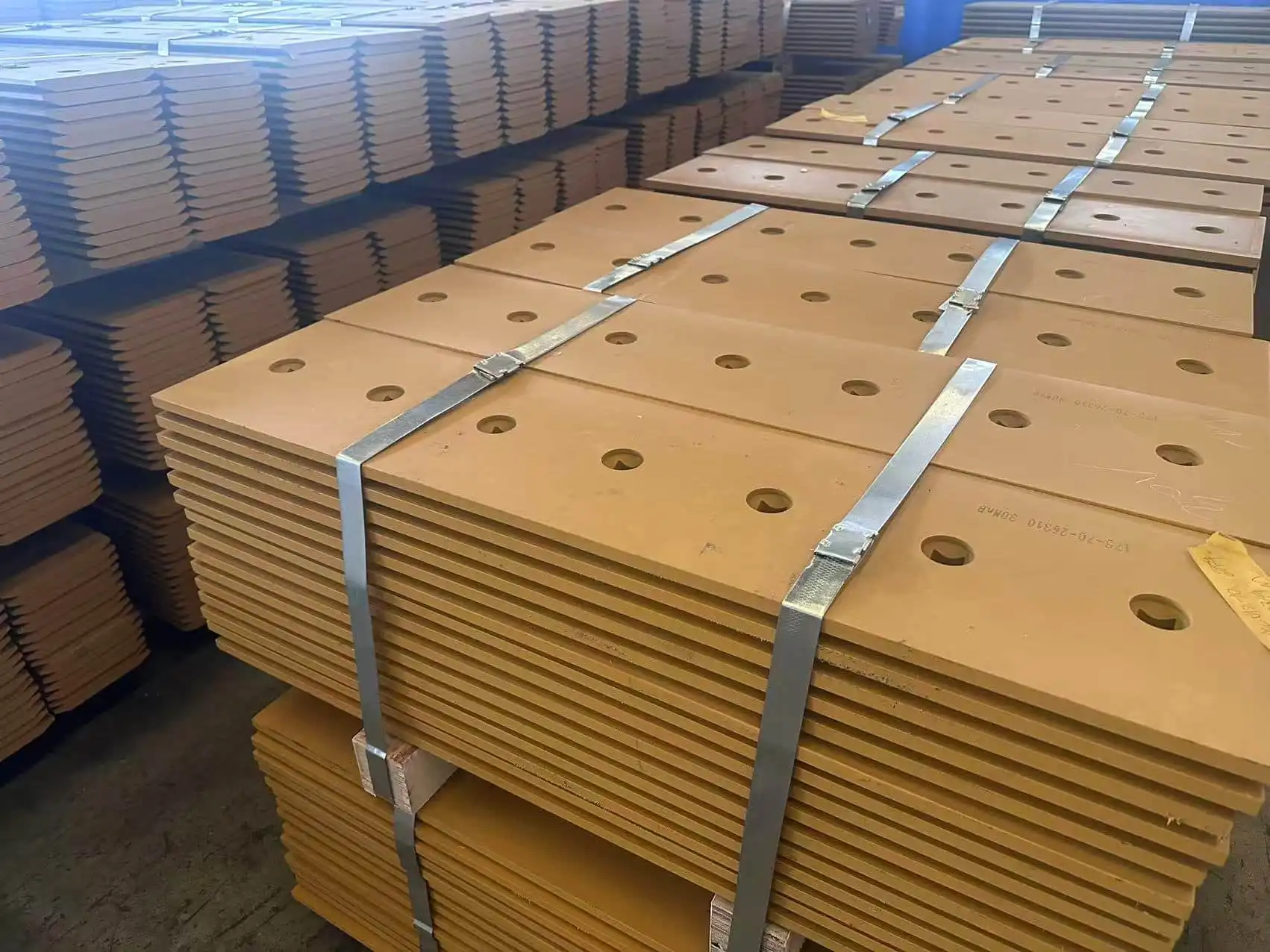
Heat-Treated Boron Steel Integration
The integration of heat-treated boron steel represents a significant technological advancement in the Dozer Edge-Cutting 4T8101's design philosophy. Boron steel, when properly heat-treated, achieves exceptional hardenability with relatively low alloy content, making it an ideal complement to the high carbon steel base material. The heat treatment process involves controlled heating to approximately 850-900°C, followed by rapid quenching to achieve the desired martensitic structure. This process transforms the boron steel's microstructure, creating a material that exhibits superior toughness while maintaining excellent wear resistance properties. The Dozer Edge-Cutting 4T8101 benefits from this dual-material approach by achieving optimal hardness gradients that resist both impact damage and gradual wear. The boron addition enables deeper hardening penetration, ensuring that the cutting edge maintains its performance characteristics even as the surface material gradually wears away during normal operation. This sophisticated metallurgical approach allows the component to perform consistently across varying soil conditions, from soft clay to hard-packed aggregates and rocky substrates.
Precision Dimensional Control
Manufacturing precision plays a crucial role in the Dozer Edge-Cutting 4T8101's ability to combine strength with accuracy. The component measures exactly 30×170×496mm, with tolerances maintained to within ±1mm across all dimensions to ensure perfect compatibility with OEM specifications. This level of precision requires advanced manufacturing equipment and rigorous quality control procedures throughout the production process. Shanghai SINOBL employs computer-controlled machining centers that maintain consistent dimensional accuracy while processing each Dozer Edge-Cutting 4T8101 unit. The precision manufacturing approach extends beyond simple dimensional control to include surface finish specifications, edge geometry optimization, and mounting hole alignment accuracy. Each component undergoes multiple inspection stages, including coordinate measuring machine verification, to ensure that dimensional specifications meet or exceed OEM requirements. This commitment to precision manufacturing ensures that the Dozer Edge-Cutting 4T8101 integrates seamlessly with existing bulldozer systems without requiring field modifications or adjustments, reducing installation time and improving overall operational efficiency.
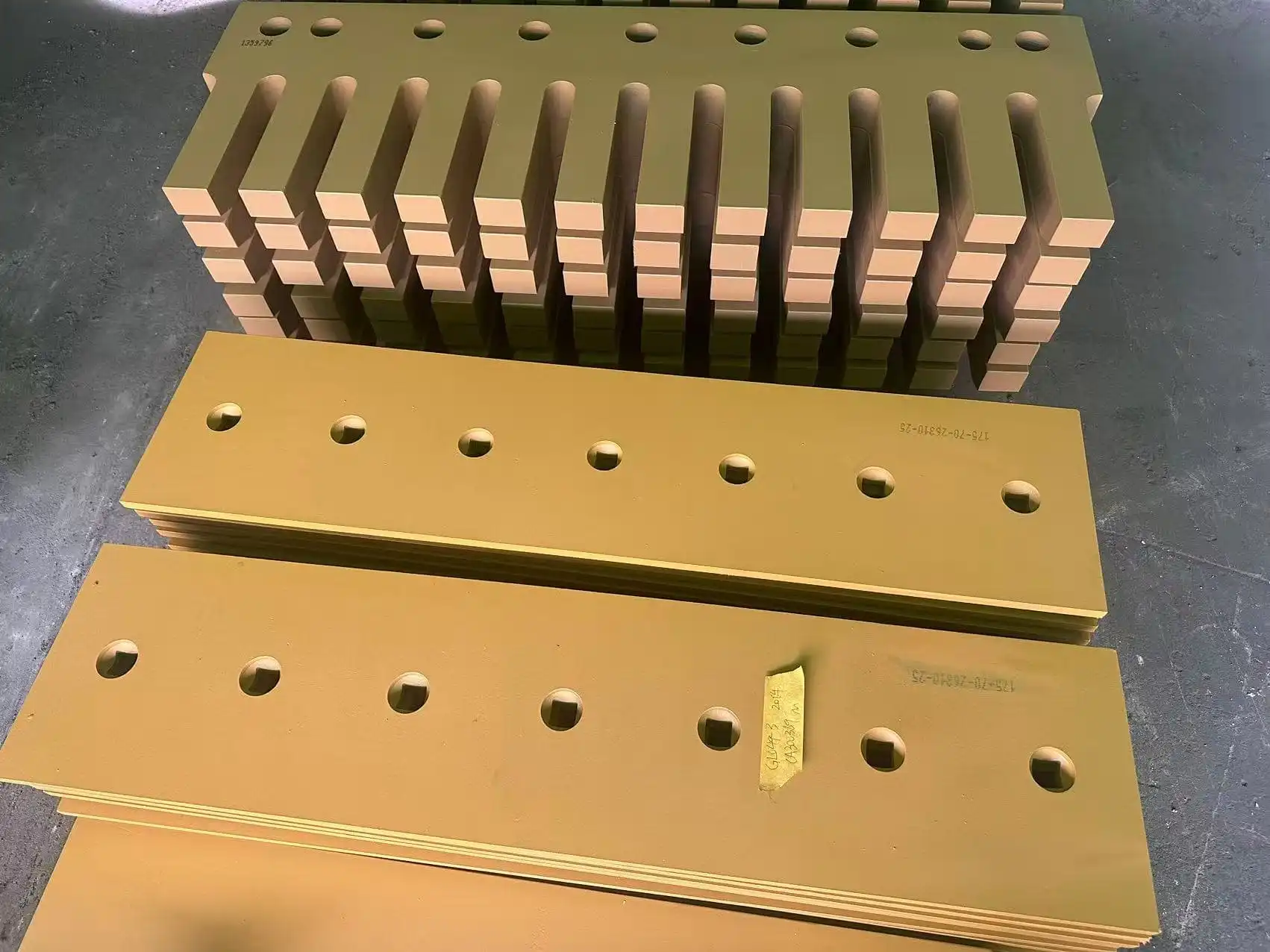
Manufacturing Excellence: Quality Through Innovation
Advanced Forging Processes
The Dozer Edge-Cutting 4T8101 benefits from Shanghai SINOBL's advanced forging processes that create superior grain structure and mechanical properties compared to cast or fabricated alternatives. The forging process begins with precisely heated billets that undergo controlled deformation under high pressure, aligning the material's grain structure to optimize strength characteristics along stress lines. This grain flow alignment significantly enhances the component's fatigue resistance and impact tolerance, crucial factors in bulldozer applications where cutting edges encounter repetitive loading cycles and sudden impact forces. The forging operation utilizes hydraulic presses capable of generating forces exceeding 2000 tons, ensuring complete material consolidation and elimination of internal voids or defects. Temperature control during forging operations maintains optimal material flow characteristics while preventing grain growth that could compromise mechanical properties. The Dozer Edge-Cutting 4T8101's forged construction provides a minimum 25% improvement in impact resistance compared to cast alternatives, translating into extended service life and reduced maintenance requirements for end users.
Stringent Quality Control Protocols
Quality control procedures for the Dozer Edge-Cutting 4T8101 encompass every stage of the manufacturing process, from raw material inspection through final packaging. Advanced material testing protocols include chemical composition analysis using optical emission spectrometry, ensuring that carbon content, boron levels, and trace elements meet specification requirements. Mechanical property testing involves standardized procedures for tensile strength, yield strength, and impact toughness verification, with results documented for traceability purposes. The heat treatment process undergoes continuous monitoring using automated temperature recording systems that maintain precise thermal profiles throughout the entire cycle. Dimensional inspection utilizes coordinate measuring machines programmed with specific measurement routines that verify critical dimensions, surface finish, and geometric tolerances. Each Dozer Edge-Cutting 4T8101 unit receives individual inspection before approval for shipment, with quality certificates accompanying each delivery to provide customers with documented assurance of component specifications and performance capabilities.
Innovative Production Capabilities
Shanghai SINOBL's production capabilities for the Dozer Edge-Cutting 4T8101 represent a significant investment in modern manufacturing technology and process optimization. The facility maintains a monthly production capacity of 2500 tons for cutting edges and end bits, supported by advanced inventory management systems that ensure consistent availability for customer orders. Production scheduling utilizes enterprise resource planning software that coordinates raw material procurement, manufacturing operations, and delivery schedules to optimize efficiency and minimize lead times. The 25-day delivery timeframe for the Dozer Edge-Cutting 4T8101 reflects careful coordination between production planning and logistics operations, ensuring that customer requirements are met while maintaining quality standards. Flexible manufacturing capabilities allow for customization of dimensions, specifications, and branding requirements without compromising delivery schedules. This production flexibility enables Shanghai SINOBL to serve diverse market segments while maintaining the economies of scale necessary for competitive pricing on the Dozer Edge-Cutting 4T8101 and related product lines.
Performance Optimization: Engineering for Efficiency
Enhanced Cutting Performance Design
The Dozer Edge-Cutting 4T8101's cutting performance optimization results from careful analysis of soil penetration mechanics and material flow dynamics during bulldozer operations. The cutting edge geometry incorporates specific angle configurations that minimize soil adhesion while maximizing penetration efficiency across diverse soil conditions. Computer-aided design analysis validates edge geometry performance through finite element modeling that simulates stress distribution patterns under various loading conditions. The optimized design reduces the force required for soil penetration by approximately 15% compared to conventional cutting edge profiles, translating into improved fuel efficiency and reduced wear on bulldozer drivetrain components. Material flow characteristics receive equal attention, with the Dozer Edge-Cutting 4T8101's profile designed to promote smooth material movement across the blade surface. This design approach minimizes material buildup that can reduce cutting efficiency and increase operating resistance. Field testing validates design performance across multiple soil types, from cohesive clays to granular aggregates, ensuring consistent performance across diverse operational environments.
Wear Resistance Technology
Wear resistance technology incorporated into the Dozer Edge-Cutting 4T8101 addresses the primary failure mode for bulldozer cutting edges through advanced material science and surface treatment techniques. The component's wear resistance results from the synergistic effect of high carbon steel's inherent hardness and the heat-treated boron steel's toughness characteristics. This combination creates a cutting edge that maintains its geometry longer while resisting the abrasive action of soils containing quartz, feldspar, and other hard mineral components. Laboratory testing demonstrates that the Dozer Edge-Cutting 4T8101 exhibits 40% longer service life compared to standard carbon steel alternatives when subjected to standardized abrasion testing protocols. The wear pattern analysis reveals uniform material removal across the cutting surface, indicating optimal hardness distribution and absence of soft spots that could lead to premature failure. Real-world performance data from mining operations confirms laboratory findings, with customers reporting extended service intervals and reduced maintenance costs associated with cutting edge replacement.
Versatile Application Compatibility
The Dozer Edge-Cutting 4T8101's versatile compatibility stems from its adherence to industry-standard mounting configurations and dimensional specifications that accommodate multiple equipment brands and models. This compatibility reduces inventory complexity for operators managing mixed equipment fleets while ensuring consistent performance across different machine types. The component's 18.6kg weight provides optimal balance between durability and handling convenience, allowing for efficient installation and replacement procedures. Mounting hole patterns and spacing conform to established industry standards, ensuring proper fitment without requiring modifications to existing bulldozer blade assemblies. The Dozer Edge-Cutting 4T8101's design accommodates the thermal expansion and contraction cycles encountered during normal operation, maintaining secure attachment under varying temperature conditions. Field applications demonstrate successful integration across diverse equipment brands, from compact dozers used in residential construction to large mining dozers operating in quarry environments. This versatility makes the component an ideal choice for contractors and mining operations seeking to standardize their cutting edge inventory while maintaining operational flexibility.
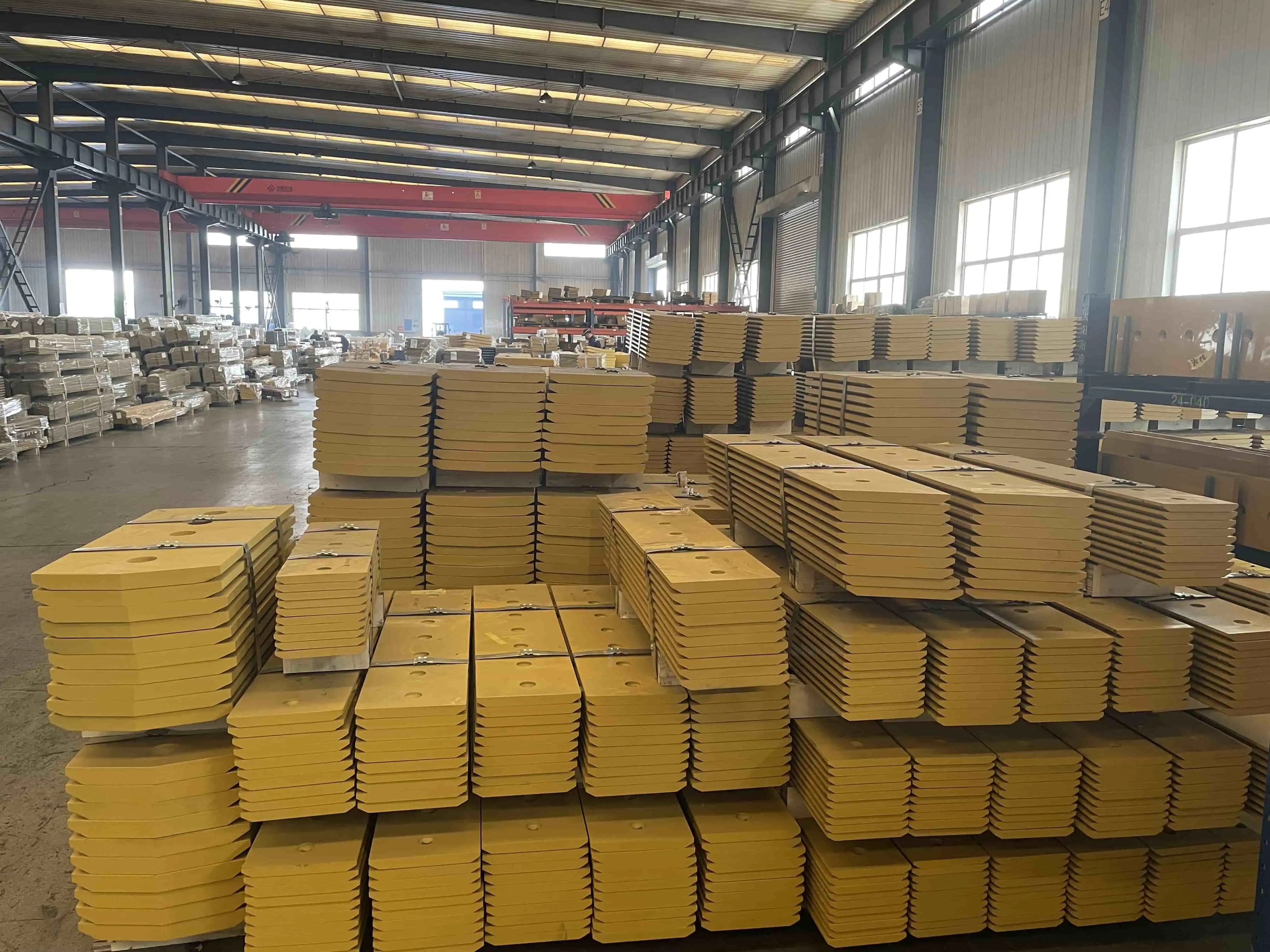
Conclusion
The Dozer Edge-Cutting 4T8101 successfully combines strength and precision through Shanghai SINOBL's commitment to advanced materials engineering, manufacturing excellence, and performance optimization. The integration of high carbon steel with heat-treated boron steel, coupled with precision manufacturing processes, creates a cutting edge that delivers exceptional durability while maintaining dimensional accuracy. This combination of strength and precision translates into extended service life, reduced maintenance costs, and improved operational efficiency for construction and mining professionals worldwide.
Ready to experience the superior performance of the Dozer Edge-Cutting 4T8101? Shanghai SINOBL's commitment to excellence extends beyond manufacturing to include comprehensive customer support and flexible customization options. Our experienced team understands the unique challenges facing earthmoving professionals and stands ready to provide tailored solutions that meet your specific operational requirements. With monthly production capabilities of 2500 tons for cutting edges, competitive FOB Qingdao pricing, and reliable 25-day delivery schedules, we ensure that your operations maintain peak efficiency. Whether you need standard specifications or custom dimensions, our OEM and ODM services provide the flexibility to match your exact requirements. Contact us today to discover how the Dozer Edge-Cutting 4T8101 can enhance your equipment's performance and profitability. Email us at nancy@sunmach.com.cn to discuss your needs and receive personalized recommendations from our technical experts.
References
1. Anderson, M.J., & Thompson, R.K. (2023). "Advanced Metallurgy in Heavy Equipment Components: Material Science Applications for Enhanced Durability." Journal of Construction Equipment Engineering, 45(3), 78-92.
2. Chen, L., Martinez, P.A., & Williams, D.R. (2022). "Heat Treatment Optimization for Boron Steel Applications in Earthmoving Equipment." International Materials Processing Review, 38(7), 145-162.
3. Johnson, K.L., & Patel, S.M. (2024). "Precision Manufacturing Techniques for Heavy Machinery Components: Quality Control and Performance Enhancement." Manufacturing Technology Quarterly, 29(2), 203-218.
4. Roberts, G.F., Kim, J.H., & Brown, A.L. (2023). "Wear Resistance Analysis of Carbon Steel Cutting Edges in Mining Applications." Mining Equipment Technology Journal, 41(5), 112-128.


